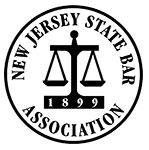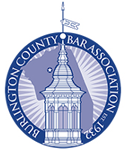 Many workplaces are obliged to have eyewash stations and drench showers, especially those that deal with hazardous materials. Some of the most common ones include construction sites, medical and health care offices, laboratories, manufacturing or processing facilities, and refineries. These requirements are set by the American National Standards Institute (ANSI), which establishes guidelines for companies that need to have them. Hazardous materials include chemicals or anything else that could be harmful to an employee’s health and safety. These stations must comply with federal regulations and local laws, and one of the best places to get this information is from the Occupational Safety and Health Administration (OSHA).
Many workplaces are obliged to have eyewash stations and drench showers, especially those that deal with hazardous materials. Some of the most common ones include construction sites, medical and health care offices, laboratories, manufacturing or processing facilities, and refineries. These requirements are set by the American National Standards Institute (ANSI), which establishes guidelines for companies that need to have them. Hazardous materials include chemicals or anything else that could be harmful to an employee’s health and safety. These stations must comply with federal regulations and local laws, and one of the best places to get this information is from the Occupational Safety and Health Administration (OSHA).
Basic OSHA Regulations
OSHA has a primary eyewash standard, which states that when any person’s eyes are exposed to injurious corrosive materials, there must be suitable facilities 10 seconds away within the work area to quickly flush or drench the eyes and body. It also specifies that eye washing stations must be located within 25 feet of a battery handling area.
The water in the eyewash stations should be at a temperature ranging from 60 to 100 degrees Fahrenheit, and should be administered in a continuous, 15-minute flow. This temperature avoids the risk of hypothermia or scalding. The eyewash unit should be located in a well-lit area and have a clear sign that identifies it. In addition, if there are shut-off valves at the station for maintenance reasons, the employer must prevent the water supply from being shut off without authorization.
Equipment Testing and Employee Training
To ensure that the eyewash and shower are in proper working order, it is recommended that one person be in charge of its operation, testing, and maintenance. ANSI provides guidelines for these criteria, and details on how to perform testing, maintain water temperature, and flow rates. The inspector should perform these duties weekly, while also keeping the supply line free of sediments, checking spray nozzles for contaminates, and looking for any leaks, rust, or other damage.
The eyewash should deliver a minimum of 0.4 gallons per minute, and the showers at 20 gallons per minute for 15 minutes at the minimum. Both should activate within one second and continue to do so hands-free. Every employee working around hazardous materials should also be trained on using the eyewash station and shower. Specifically, they should understand how to keep their eyes open while they are being flushed. Waiting until an accident occurs can result in serious harm to a worker’s eyes. Furthermore, OSHA can conduct regularly scheduled or random inspections of workplaces, and these may occur more frequently following an accident. OSHA violations may lead to fines, warnings, and possible shutdowns.
Cherry Hill Workers’ Compensation Lawyers at Pietras Saracino Smith & Meeks, LLP Represent Employees with Work-Related Eye Injuries
If you suffered an eye injury at work, reach out to a compassionate Cherry Hill workers’ compensation lawyer at Pietras Saracino Smith & Meeks, LLP for a confidential case evaluation. Complete an online form or call us at 856-761-3773 for a free consultation. Located in Cherry Hill, New Jersey, we serve clients throughout South Jersey, including Camden, Cinnaminson, Delran, Maple Shade, and Pennsauken.






